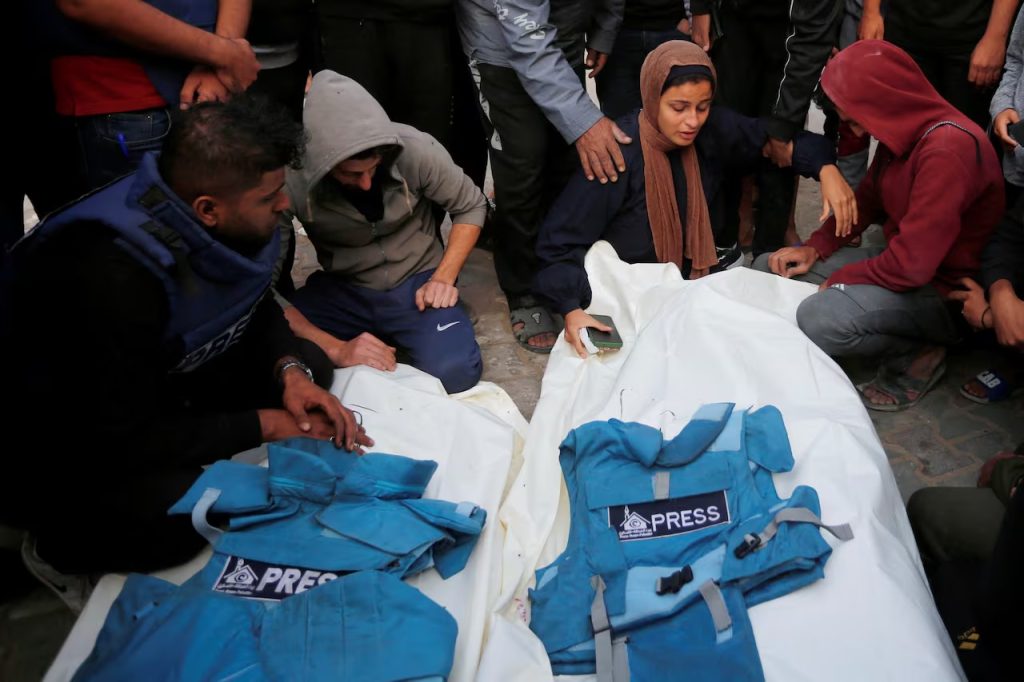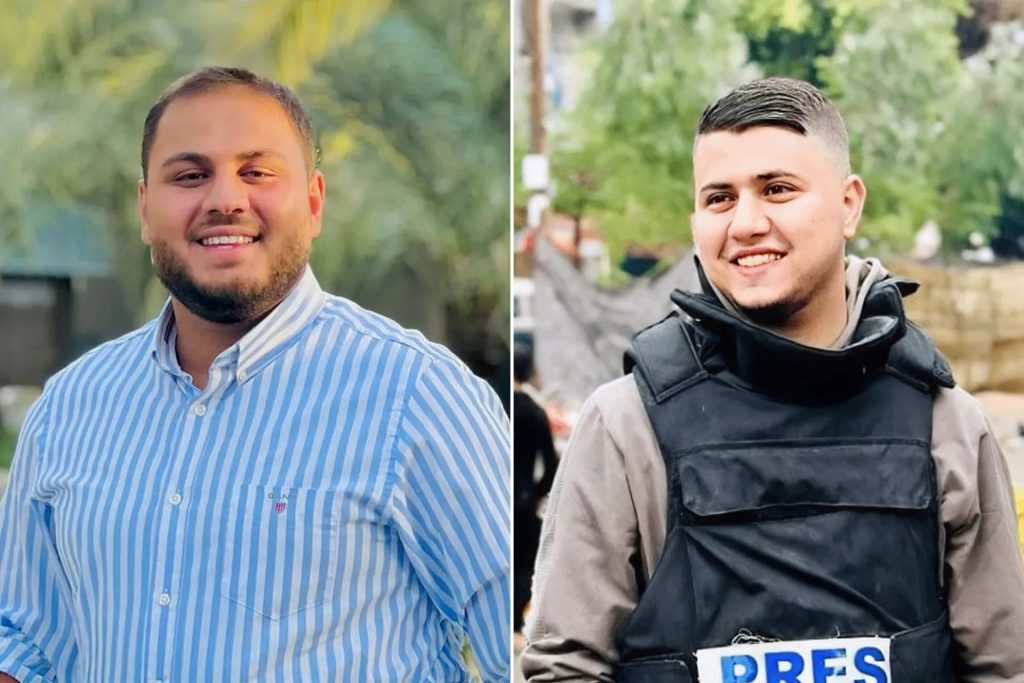Israel Leads in Journalist Killings Worldwide in 2024
CPJ reports Israel responsible for nearly 70% of journalist deaths in 2024.

Watan-The number of journalists killed over the past year has reached an unprecedented level, with approximately 70% of them being Palestinians killed by Israeli occupation forces.
This marks a 22% increase compared to 2023, reflecting “rising levels of international conflict, political unrest, and crime worldwide,” according to the annual report by the Committee to Protect Journalists (CPJ), an independent, non-profit organization based in New York.
According to CPJ, 124 journalists from 18 countries were killed in 2024, making it the deadliest year for media workers since the organization began documenting such cases three decades ago.
CPJ Highlights Israel’s Role in Journalist Fatalities in 2024
CPJ identified the Israeli aggression on Gaza as the primary cause of the global increase in journalist fatalities, with Israeli forces killing “82 Palestinian journalists.” However, the number of Palestinian journalist martyrs in Gaza during the same period is much higher, according to the government’s media office in the Strip, exceeding 200 by the end of last year.
The discrepancy in statistics arises from CPJ’s methodology, which considers a case “confirmed” only if it is certain that “the journalist was killed in direct retaliation for their work, in combat or crossfire, or while on a dangerous assignment.”
CPJ also reported a “worrying increase in targeted killings,” stating that “at least 24 journalists worldwide were deliberately killed because of their work in 2024.” In Gaza and Lebanon, the organization documented “10 cases where journalists were directly targeted by the Israeli military, in defiance of international laws that recognize journalists as civilians during wartime.” CPJ is also investigating 20 other killings that it suspects were targeted attacks by Israel against journalists.

Israel Follows a “Lethal Pattern”
CPJ highlighted that Israel has a history of targeting journalists even before its latest assault on Gaza. In 2023, the organization released a report titled “Deadly Pattern: 20 Journalists Killed by Israeli Forces Over 22 Years Without Accountability,” which was based on the killing of Al Jazeera correspondent Shireen Abu Akleh by Israeli gunfire in 2022. The report documented the Israeli military’s responsibility for killing at least 20 journalists since 2001 and identified “a pattern in Israel’s responses seemingly designed to evade accountability.” It noted that Israel had failed to conduct thorough investigations into these killings and only carried out in-depth probes when the victim was a foreign journalist or worked for a major media outlet. Even in those cases, investigations were slow, taking months or years, and ultimately cleared the shooters of any wrongdoing.
2024: The Deadliest Year for Journalists
Sudan and Pakistan ranked second in the list of countries with the highest number of journalist fatalities in 2024, with six journalists killed in each. Other killings occurred in Haiti (2), Mexico (5), Myanmar (3), Mozambique (1), India (1), and Iraq (2).
Independent journalists made up over 35% (43) of total journalist killings worldwide in 2024, largely due to their lack of resources. Of these, 31 were Palestinians covering what CPJ described as Israel’s genocide in Gaza. Foreign media outlets remain banned from entering Gaza unless accompanied by the Israeli military. CPJ and dozens of other press and human rights organizations worldwide have repeatedly called on Israeli and Egyptian authorities to allow independent journalists access to the war zone.

As a result, the Middle East and North Africa remained the most dangerous region for journalists in 2024, accounting for over 78% (97) of global journalist fatalities, according to CPJ.
During the fall of Bashar al-Assad’s regime on December 8, four journalists were killed in Syria, which CPJ cited as an indicator of the resurgence of deadly attacks in a country with one of the worst records of impunity for journalist killings.
So far in 2025, six journalists have already been killed worldwide, continuing the upward trend of journalist fatalities.
CPJ’s executive director, Jodie Ginsberg, commented on the findings in a statement released Wednesday evening, saying, “Today is the most dangerous time for journalists in CPJ’s history.” She added, “The war in Gaza has had an unprecedented impact on journalists and reflects a significant decline in global standards for protecting journalists in conflict zones. But Gaza is not the only place where journalists are at risk. Our figures show that journalists are under attack everywhere in the world.” Ginsberg emphasized that “the rising number of journalist killings is part of a broader trend to silence the media globally. This should concern us all, as censorship prevents us from addressing corruption, crime, and holding those in power accountable.”
Israel and China Lead the World in Jailing Journalists
In its annual report on imprisoned journalists released in January, CPJ found that 361 journalists were behind bars worldwide by the end of 2024. Israel ranked second in the number of imprisoned journalists, following China. As of December 1, China held 50 journalists in prison, while Israel detained 43, followed by Myanmar with 35.
CPJ noted that Israel has significantly increased its arrests of journalists since it launched its genocide in Gaza on October 7, 2023. The report stated, “Israel ranked second due to its targeting of media coverage in the occupied Palestinian territories.” This includes preventing foreign reporters from entering Gaza and banning Al Jazeera from operating in Israel and the occupied West Bank.

The organization emphasized that all 43 journalists currently detained by Israel are Palestinian, surpassing countries such as Myanmar (35), Belarus (31), and Russia (30) in journalist imprisonment. CPJ’s Jodie Ginsberg expressed concern, warning that “an increase in attacks on journalists is always a precursor to broader assaults on freedoms—freedom of the press, access to information, freedom of movement and assembly, and the right to protest.”






